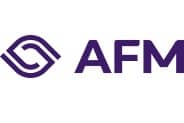
Governance in systems based on distributed ledger technology (DLT)
The (experimental) use of DLT is growing, also in the financial sector. DLT systems themselves advocate the fact that they use (consensus) algorithms and cryptography to create a leaderless system (horizontal).
How is it possible to ensure that decisions in these DLT systems are in the interest of all stakeholders and the public interest, including supervisory authorities? Given the popularity of the Bitcoin and Ethereum blockchains, for example, it is not inconceivable that a part of the FMI will be based on a public DLT system in the future. It is therefore important to gain a better understanding of the governance of such DLT systems, and what the risks are for FIs when using DLT.
This paper compares the governance of financial institutions (FIs) and financial market infrastructures (FMIs) on the one hand with the governance of systems based on distributed ledger technology (DLT systems), on the other, to discover how they differ, and where potential risks and benefits lie for their future use, also in the financial markets. We answer two questions: i) What are the differences in governance between traditional FIs, FMIs and DLT systems? and ii) What are the consequences of decentralised governance of DLT systems for supervisory authorities?
Download the occasional paper Governance in systems based on distributed ledger technology (DLT)
Contact for this article

Would you like to receive the latest news from AFM?
Subscribe to our newsletter, we will keep you up-to-date.